Today we are looking at the Inland TD510 2TB SSD. We have taken a look at some Inland SSDs in the past, specifically some 1TB PCIe Gen3 units like the Premium and Professional drives. Generally speaking, I liked those drives, but they were a technological step behind the curve when I looked at them. Today’s TD510 bucks that trend; this is the first PCIe Gen5 drive that I have looked at, so I am very excited to see how it performs.
Inland TD510 2TB NVMe SSD
The Inland TD510 2TB comes in a single-sided M.2 2280 (80mm) form factor.
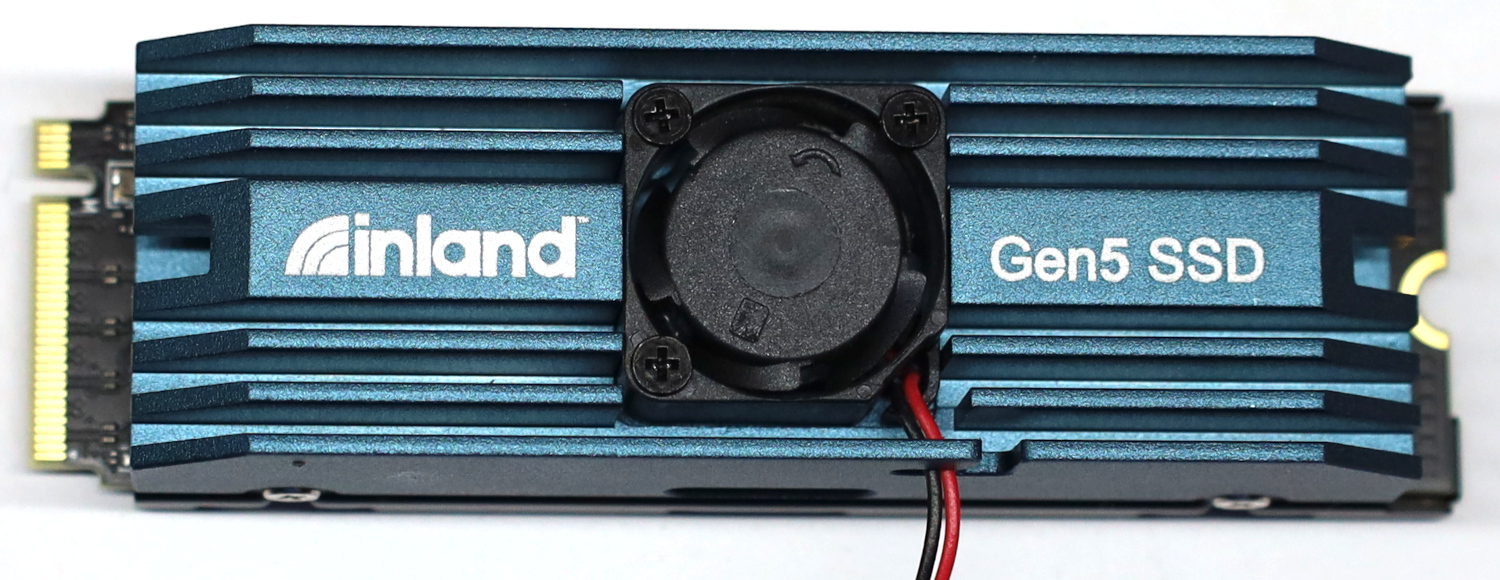
The Inland TD510 comes with a large heatsink (for a SSD) and sports a little tiny fan for active cooling. Inland’s packaging calls this a removable heatsink, but in practice is is difficult to remove. Beneath that big heatsink lies the Phison E26 controller, TLC NAND, and a DRAM cache. Update: We have a quick (under 30 second) video showing off this drive, here:
One note on the integrated fan; this fan is not intelligent in any way and runs at full speed the entire time the system is powered on. More importantly, this fan is annoying. I do not know the actual RPM this tiny fan is spinning at, but it seems to be pretty darn fast and makes a high pitch whine the entire time. While I did my testing with the fan enabled and just suffered through the noise on my open-frame test bench, my recommendation might be to ensure some other airflow hits this drive and forget using the built-in fan for the sake of your ears.
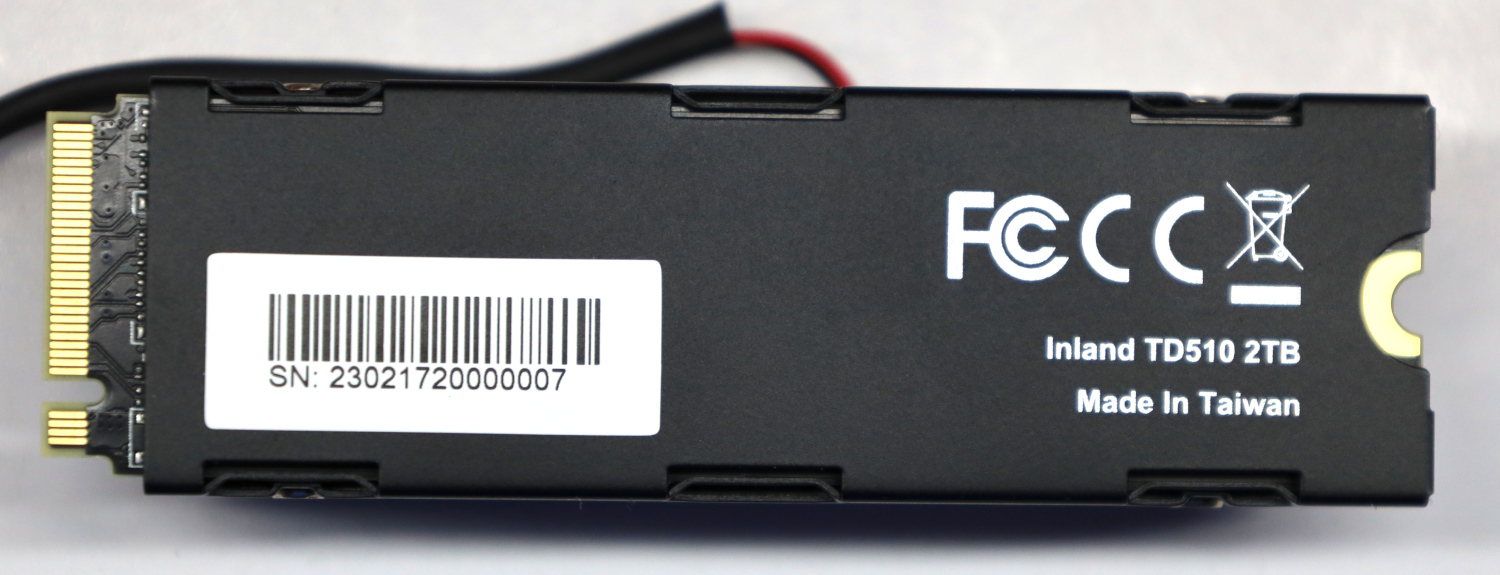
The back of the TD510 heatsink has almost nothing on it.
Inland TD510 SSD Specs
The TD510 comes in 1TB and 2TB capacities.
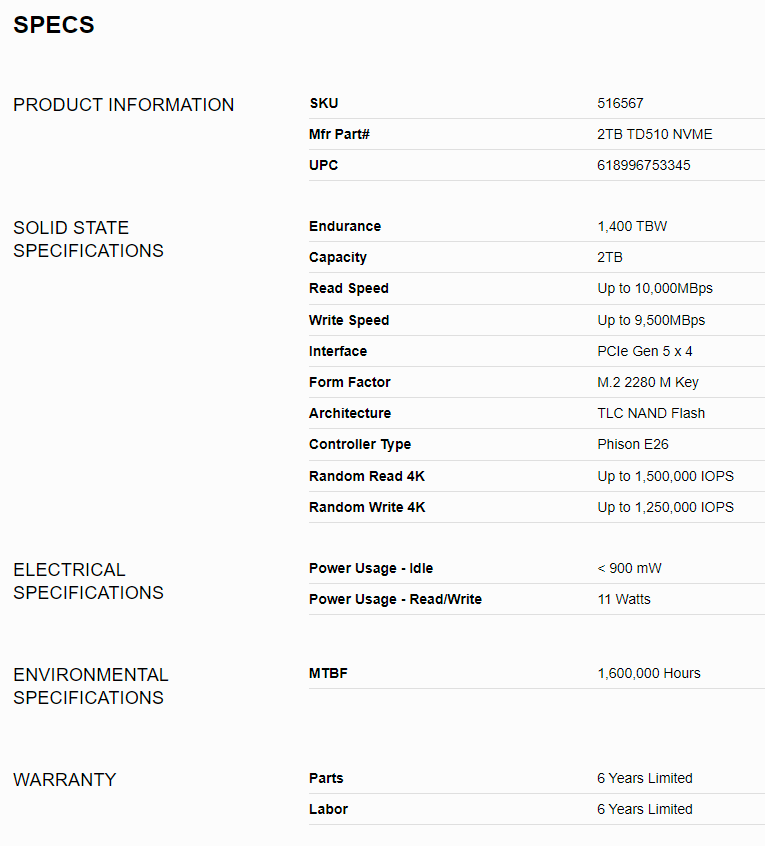
The Inland TD510 we have today is the 2TB model, and as a Gen5 drive offers the highest rated read and write speeds I have seen at 10000 MB/s for sequential read and 9500 MB/s for sequential write. Much like first-generation PCIe Gen4 drives, this rated performance does not fully max out an x4 interface in a Gen5 system, but it still represents a sizeable improvement in sequential performance over the very best that a Gen4 drive could offer.
Endurance comes in at 1400 TBW for the 2TB SKU, which is pretty good. The warranty, on the other hand, is 6 years long. For years the industry-standard warranty for a premium drive has been 5 years, so bumping this drive up to 6 represents a serious statement of confidence by Inland.
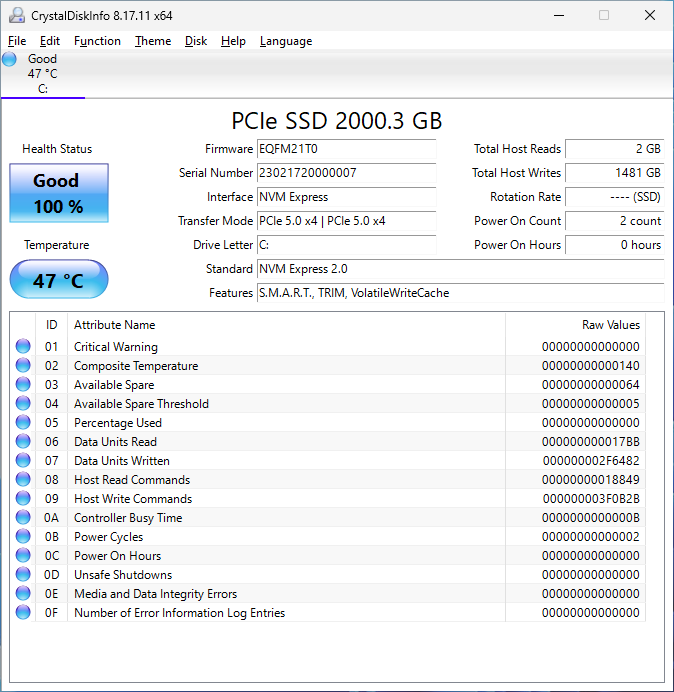
CrystalDiskInfo can give us some basic information about the SSD and confirms we are operating at PCIe 5.0 x4 speeds using NVMe 2.0.
Test System Configuration
We are using the following configuration for this test:
- Motherboard: ASRock X670E Steel Legend
- CPU: AMD Ryzen 9 7900X (12C/24T)
- RAM: 2x 16GB DDR5-6000 UDIMMs
Our testing uses the Inland TD510 2TB as the boot drive for the system, installed in the M.2_1 slot on the motherboard. This slot supports up to PCIe Gen 5 x4. The drive is filled to 85% capacity with data, and then some is deleted, leaving around 60% used space on the volume.
Next, we are going to get into our performance testing.

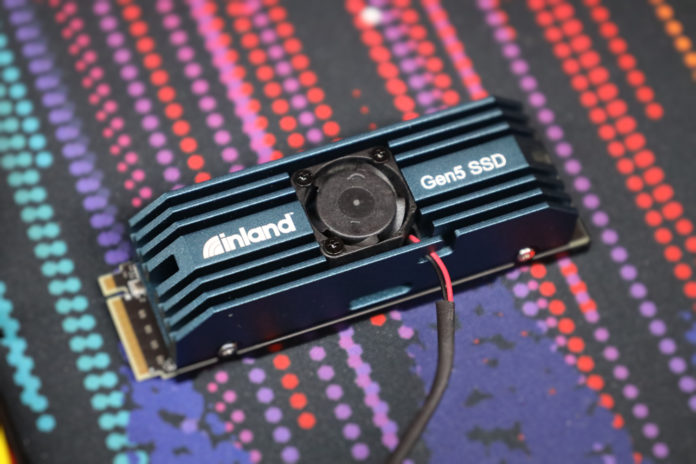



It’s nice to see PCIe 5 SSD reviews here (looks like STH didn’t receive a Crucial T700 review unit).
The fan looks annoying and this power consumption necessitating a big heatsink makes me wonder:
Will we see fast PCIe 5 SSDs in laptops in the near future or are we hitting some kind of limit?
@Lasertoe it seems like that will be more up to the NAND side than anything else: 10-15w isn’t crazy power; but it’s enough that you probably can’t just give the m.2 slot a thermal pad and some chassis contact and call it good; and having to go with a more substantial heat spreader or an additional heatpipe running to the main heatsink is going to mean more cost and complexity, a bit more weight, and less convenient service.
Absolutely doable, generations of 13-15in laptops have had versions with or without a low end discrete GPU(like an MX450 or similar) with just a slightly different heatpipe assembly, no externally visible chassis changes) at TDPs of up to 30w or so; but enough disadvantages that you’d need to want it.
Current benchmarks of PCIe5 drives(at least the affordable ones in 2280 or 22110 sizes) just don’t seem to make a convincing case for going to that trouble: synthetic tests of how fast you can fill the cache show the additional bus speed; but sustained performance looks very, very, much like a PCIe4 drive.
Very interesting. Would have loved to see it compared to a high end Optane drive. Pitty there will never be a PCI 5.0 x4 Optane drive. As far as I know they still have the best access times and don’t slow down when the DRAM gets full like with NAND based SSDs.
Much like first-generation PCIe Gen4 drives, this rated performance does not fully max out an x4 interface in a Gen5 system, but it still represents a sizeable improvement in sequential performance over the very best that a Gen4 drive could offer.
https://www.servethehome.com/inland-td510-2tb-pcie-gen5-nvme-ssd-review/